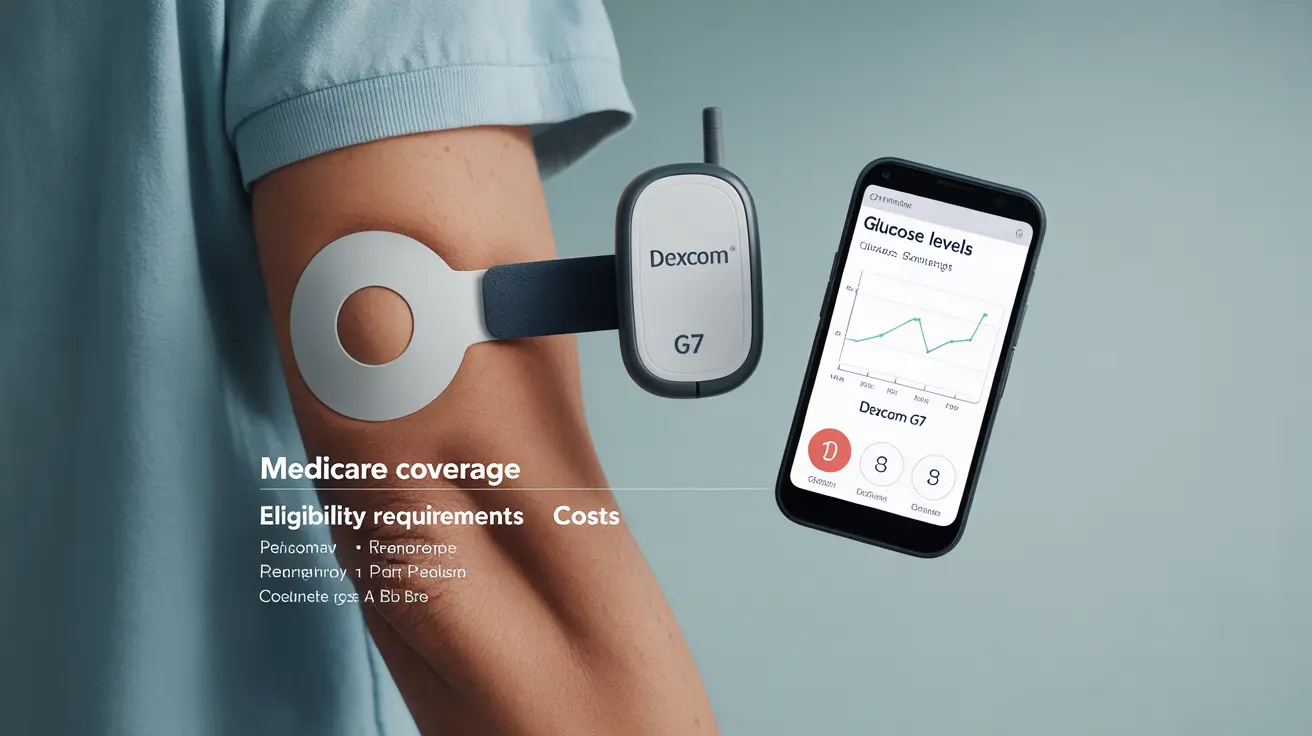For individuals managing diabetes, understanding Medicare coverage for continuous glucose monitoring (CGM) devices like the Dexcom G7 is crucial for both health management and financial planning. This comprehensive guide will explain everything you need to know about Medicare coverage for the Dexcom G7 system, including eligibility requirements, costs, and important considerations.
Medicare Part B Coverage for Dexcom G7
Medicare Part B generally covers the Dexcom G7 continuous glucose monitor as durable medical equipment (DME) when specific medical criteria are met. The coverage includes both the CGM device and necessary supplies like sensors and transmitters.
Basic Coverage Requirements
To qualify for Medicare coverage of the Dexcom G7, patients must meet several criteria:
- Diagnosis of either Type 1 or Type 2 diabetes
- Regular insulin treatment with multiple daily injections or an insulin pump
- Frequent blood glucose adjustments based on testing results
- In-person visits with their healthcare provider every 6 months
Medicare Eligibility Requirements for Dexcom G7
Medicare has established specific eligibility criteria that must be documented by your healthcare provider to qualify for Dexcom G7 coverage:
- Documented frequent adjustments to insulin treatment
- Management of diabetes requiring at least 3 insulin injections per day
- Testing blood glucose at least 4 times daily
- Regular consultations with healthcare providers about diabetes management
Out-of-Pocket Costs with Medicare
Under Medicare Part B, beneficiaries are typically responsible for:
- 20% of the Medicare-approved amount for the Dexcom G7 system
- The annual Part B deductible (if not already met)
- Monthly costs for sensors and other supplies
- Any additional costs not covered by Medicare
Supply Coverage Details
Medicare coverage includes:
- One Dexcom G7 transmitter every 3 months
- Sensors (typically a 90-day supply at a time)
- Replacement receivers when medically necessary
Device Requirements and Smartphone Integration
Medicare has specific requirements regarding Dexcom G7 receivers and smartphone integration:
- A dedicated Dexcom receiver may be required for Medicare coverage
- Smartphone use as a secondary display device is generally permitted
- Requirements may vary based on individual circumstances and plan details
Medicare Advantage Plans and Dexcom G7
Medicare Advantage (Part C) plans must provide at least the same coverage as Original Medicare for the Dexcom G7, but may offer additional benefits:
- Coverage terms and costs may vary by plan
- Some plans might offer lower copayments or additional CGM-related benefits
- Prior authorization may be required
Frequently Asked Questions
Does Medicare Part B cover the Dexcom G7 continuous glucose monitor for people with diabetes? Yes, Medicare Part B covers the Dexcom G7 CGM system when prescribed by a doctor and when specific medical criteria are met, including frequent insulin adjustments and multiple daily blood glucose tests.
What are the Medicare eligibility requirements to get coverage for the Dexcom G7 CGM system? To be eligible, you must have diabetes requiring intensive insulin treatment, test blood glucose at least 4 times daily, require frequent insulin adjustments, and have regular in-person visits with your healthcare provider.
How much will I have to pay out-of-pocket for the Dexcom G7 with Medicare coverage? With Medicare Part B, you'll typically pay 20% of the Medicare-approved amount after meeting your annual deductible. This applies to both the initial equipment and ongoing supplies.
Does Medicare require using a specific Dexcom G7 receiver for coverage instead of a smartphone? Yes, Medicare generally requires the use of a dedicated Dexcom receiver for primary display, though smartphones can be used as secondary display devices.
Can Medicare Advantage plans cover the Dexcom G7 and do their costs differ from Original Medicare? Medicare Advantage plans must cover the Dexcom G7 at least as well as Original Medicare, but costs and additional benefits may vary by plan. Some plans might offer more favorable cost-sharing arrangements.




